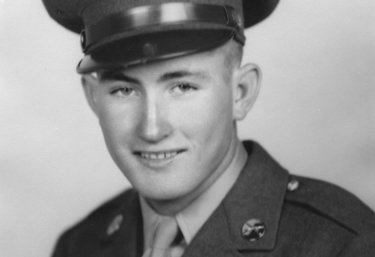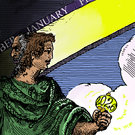Fabric and thread make a flag. The ideals it symbolizes make a flag worthy of respect.
My husband recently returned from Oregon, where he cleared out his boyhood home after his mother died there at the age of 89.
Among the prized possessions he brought back with him is a small blue leather box that says in embossed gold capital letters “Purple Heart.” Right after graduating from high school in Texas, Baisel Spencer, my husband’s father, had joined the Army to fight in World War II.
He was shot in the Philippines on the island of Cebu after the invasion of Leyte Gulf. He rarely spoke of the wound that earned him a Purple Heart. He then was part of the occupation of Japan.
Baisel had grown up during the Great Depression, one of 13 siblings, the son of a sheriff and cowboy with a mother who knew how to stretch food to feed a large family and used scraps to fashion beautiful quilts to keep them warm.
When Baisel returned from the war, he got on with his life. He fell in love, built a home, raised a family. At his funeral in 2014, men in crisp uniforms with white gloves ceremoniously removed the flag that draped his coffin, before it was lowered into the ground, and, with reverence, folded the flag into a triangle.
Over the years, I had watched a similar ceremony many times at Altamont’s Veterans of Foreign Wars Post as Gold Star Mothers, each of them dressed in white, together folded an American flag into a neat triangle as words were read for each fold.
It always made me cry to watch women who had lost their sons to war bravely carry on this tradition in their memory. I was there, as a reporter, to cover the event, but found it hard to focus my camera through the tears.
At Baisel’s funeral, Marie, his widow, accepted the flag with resolve as she sat by his grave. She had suffered a stroke four days after his death but managed to be there, seated in a wheelchair, her head held high. She always persevered.
My husband has brought that flag to our home now, still folded so that just the field of blue is visible, embroidered with white stars.
For me, it’s a reminder not just of Baisel’s death but of his life, and how he lived it. He was always proud of the American flag.
I am too. My daughter recently purchased one for me to fly from the front porch of our news office. My husband installed the bracket on a center post, worried that, if it were too close to the front steps, on a windy day, the flag would flap into visitors coming to our office.
On days when the weather is fair, I take great pride in flying the flag. It is a symbol that belongs to all Americans. I do not like to think of it being preempted by a particular group or for a particular meaning.
Our flag represents each of us: Those who were born in this country and fought in wars to defend it like my husband’s father and my own father, and those who are new to this country or who were pacifists and objected to wars.
It is in our diversity that we Americans have strength. And our flag belongs to all of us.
I was prompted to write this editorial by a letter I received this week from a Hilltown resident, Rodney Mattison. He is concerned that two American flags at the Berne ballfield are flown in all weather and not properly illuminated at night.
His concerns caused me to look up the United States Flag Code, which was created in 1923 and became law in 1942. “No disrespect should be shown to the flag of the United States of America,” the law begins.
The law itemizes the correct way to hang and carry a flag; notes it should not be used for clothing, bedding, or drapery; says that it should not be used for advertising or as part of a costume or athletic uniform; requires that it not be torn, soiled, or damaged; and says that it should be disposed of with dignity, preferably by burning.
We recently ran a full page of pictures, showing flags being reverently burned at Altamont’s American Legion Post, setting a good example for all of us.
To Rodney Mattison’s point, the code says, “It is the universal custom to display the flag only from sunrise to sunset on buildings and on stationary flagstaffs in the open. However, when a patriotic effect is desired, the flag may be displayed 24 hours a day if properly illuminated during the hours of darkness.”
The flag code is not enforceable. The law does not provide penalties for any of its provisions. The United States Flag Code is, rather, a guideline for proper flag etiquette.
We don’t want to single out the ballfield in Berne where the intentions of flying the flag are no doubt honorable. Rather, we strive with this editorial to raise general public awareness about the best way to respectfully display an American flag.
Etiquette is a system of guidelines a society develops for its people to live by to show respect for each other. They are rules worth following, particularly in times, as now, when our American society is being splintered.
Showing respect for our nation’s flag is a way of showing respect for one another — one nation, indivisible with liberty and justice for all.
— Melissa Hale-Spencer


Melissa!!!
Kudos to you and this editorial. It is about time that recognition of our greatest emblem of freedom and unity is stated so eloquently.
Thank you
Dotty